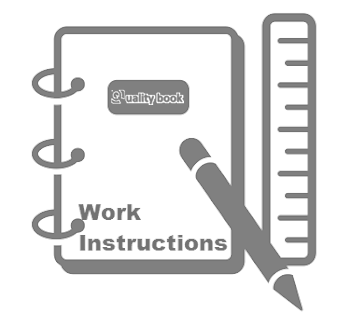In manufacturing, work instructions are documents that describe product manufacturing processes, the correct way to perform certain tasks or a specific activity. In particular, work instructions are applied to any task or specific process in a product manufacturing facility to ensure the quality and safe completion of the product.

Any work instruction document, how to complete any task successfully and safely? These steps are described.
In fact, it serves as a guide with detailed step-by-step instructions on how to accomplish any task. In short, work instructions indicate how to accomplish a specific task within a process with very detailed directions.
Importance of work instructions
Work instructions are important to simplify performance management, control product quality and consistency, and reduce work order variation. Successful execution of work instructions allows manufacturers to improve quality.
Provides a great training for newly hired employees, thereby saving on training costs. From this document – Standard work instructions get consistency.
Work instructions are one of the most basic tools used in every business or organization. which help an employee follow a sequence of steps. It is important to address them to make sure there are no pending jobs, and to learn about job performance and possible improvements.
What should be the work instruction?
A common question arises as to what the work instructions should be like – and what should be taken care of when and how. So, the following hint clarifies the point:
Should be clear.
Whatever be the task, it gives instructions in a way that makes them easy to understand for every employee who performs the task. Work instructions should explain how employees perform their tasks. There should be no room for interpretation. They should not be ambiguous. You want to minimize the chance of them confusing your workers.
Simple and organized.
Instructions should be as short and simple as possible. If job instructions cannot explain the job or how to do it in a simple way, the subsequent employees will not understand it very well. And it also has to be kept in mind that the complete instructional process should be systematic.
Use visual images [graphics]
Instructions with visual illustrations make the procedures easier to understand and easier to read. It is a proven fact that it is easy to understand any handwriting in the picture and remember that this instruction is for the workers.
Make it accessible.
Employees associated with each of those tasks should have easy access to work instructions for when and where they need it. Most of the product manufacturers paste it in the department or process area at such a place that everyone can easily read it.
Make reliable.
The product manufacturing process can be very complex, so before creating a work order, consult with experienced staff and know how to properly complete processes – years of experience help create this work order, and maintain reliability. Is.
Don’t be confuse – what to make a work instruction or SOP?
See, actually both the guides are the same, but there is a slight gap between them.
A Work instruction shows guidance on how to actually complete the process to be perform. Whereas Standard Operating Procedure [SOP] outlines what should be done by whom, according to the policies of the manufacturing unit.
In both cases it is possible to use images and other visual symbols, but task instruction is a more accurate solution.
Herein below structure and contents of the work instruction, which is usual for any manufacturing unit:
What we can include in work instruction?
- Introduction Section: Job Title & Description
- Purpose & Scope of Work Instruction
- Outlines for KPI, Goals, and Objectives of Production
- Safety requirements
- Quality Standards
- Step-by-Step Instructions
- Materials, training, equipment, tools, skills Requirements
- Safety Precautions
- Quality Control Checks
- Expectations from each step – Results
- Documentation Requirements
- Reporting & Auditing Process
- Summary of Work Instruction
- Review and Approval Process
- Revision History
- References (Example. ISO, TS, EHS, etc.)
Look, actually each department has its own importance and specific needs as well requirements of the manufacturing unit. Hence, it is appreciating each defined goal should be clear and concise with instruction.